The lakeside proves perfect mirror for palaces and cottages that alternate styles of neoclassical and Art Nouveau.The narrow streets of the center, instead of clear medieval flavor, lead to the discovery of houses of the fifteenth and sixteenth centuries, and above all the city tower and the tower-houses of the noble families stand out as well as the silhouette of churches and bell towers.
Nerve center of exchanges between Lombardy and Trentino, Lovere offers the charm of natural colors in constant alternation, the typical flavors and the multiple influences that only border lands can offer.
The lakeside proves perfect mirror for palaces and cottages that alternate styles of neoclassical and Art Nouveau.The narrow streets of the center, instead of clear medieval flavor, lead to the discovery of houses of the fifteenth and sixteenth centuries, and above all the city tower and the tower-houses of the noble families stand out as well as the silhouette of churches and bell towers.
Nerve center of exchanges between Lombardy and Trentino, Lovere offers the charm of natural colors in constant alternation, the typical flavors and the multiple influences that only border lands can offer.
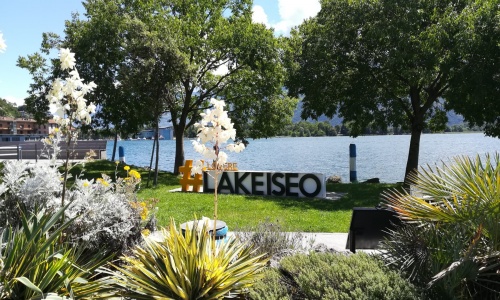
Small museum, great beauty!
The Academy was built between 1821 and 1826 by Count Luigi Tadini, who, three years later, founded the Institute of Fine Arts that bears his name. It hosts precious works that the count gathered so that they could be a model for young artists, and to this end, a school of design and music was annexed to the Academy, which is still active nowadays.
In the 33 rooms masterpieces of famous artists such as Jacopo Bellini, Palma the Younger, Francesco Benaglio, Giacomo Ceruti, brother Galgario, Giandomenico Tiepolo, and Francesco Hayez are displayed. The works of Antonio Canova are very significant and certainly deserve to be mentioned.
Small museum, great beauty!
The Academy was built between 1821 and 1826 by Count Luigi Tadini, who, three years later, founded the Institute of Fine Arts that bears his name. It hosts precious works that the count gathered so that they could be a model for young artists, and to this end, a school of design and music was annexed to the Academy, which is still active nowadays.
In the 33 rooms masterpieces of famous artists such as Jacopo Bellini, Palma the Younger, Francesco Benaglio, Giacomo Ceruti, brother Galgario, Giandomenico Tiepolo, and Francesco Hayez are displayed. The works of Antonio Canova are very significant and certainly deserve to be mentioned.
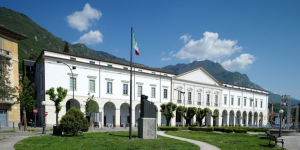
The cultural project of the Earl is set in the active discussion about the educational function of this Museum. Such debate was animated by the Enlightenment ideas and by that strong civic feeling which, between the 18th and the 19th centuries, saw the foundation of the privately-owned Carrara Academy (Bergamo, 1795), Picture Gallery by Paolo Tosio (Brescia, 1832), Malaspina Building of Fine Arts (Pavia, 1833), Ala Ponzone Institute (Cremona, 1842), which put the basis of the current Museum network in Lombardy.
The Tadini Academy is the most charming of the above-mentioned institutions: apart from benefiting from a superb location on the lake, it is the only one that has kept its original collection, library and historical archive all together in its original building.
Earl Tadini and his family used to spend their holidays in Lovere but after the tragic death of his son Faustino, due to the collapse of a building, he stayed away from the town for quite a long time. He came back in 1818, determined to build a palace hosting his art collections. Sebastiano Salimbeni, an 'amateur architect', carried out the project.
The palace, designed around the chapel dedicated to Faustino Tadini (commemorated by a Stele by Antonio Canova), was due to host not only Tadini's collection, but the design and music school which became an important reference point for the territory. The construction was realised between 1821 and 1824. In 1827, it could already house all of Tadini's art collections, which until that moment had been housed in its private residence in Crema.
Tadini Academy of Fine Arts was formally established in 1829, which is when its founder died. It is among the oldest museums in Lombardy and expresses the love for Neoclassicism. The School of Music is still active, with a regular academic year as well as specialisation summer courses for violinists, cellists and lyrical singers. From 1927, the Concert Hall has been hosting prestigious chamber music concerts with singers of international standing. The event takes place annually in April and May.
Exhibition criteria - Visit itinerary
The superb palace overlooks the lake and has retained its old charm. Luigi Tadini's collection reflects the various artistic interests of this nobleman, whose ideas were inluenced by the Lombard Enlightenment and whose library incorporates literary, philosophical, historic and scientific books. Earl Tadini was, indeed, passionate about most forms of art, technique and nature: not only did he collect paintings, sculptures, drawings and chinaware, but also minerals, fossils and animals. His thought is summarised on the simple dedicatory epigraph which is situated on the entrance grand staircase and which he personally dictated: A. MDCCCXXVI / LITTERIS ARTIBUS NATURAE / DICATUM.
The core collection is Antonio Canova's production (the Tadini family personally knew the artist), whose most significant works are Religion, a rare terracotta sketch for Clemente XIII's monument and Tadini Stele, commemorating Faustino, the Earl's son, which is one of the last masterpieces of the sculptor.
The Gallery, which is accessible through three flights of stairs, is composed of 23 connected rooms arranged as per the original criteria. The Archaeological room is one of the few works in Lombardy that kept its 19th century furnishing and all the rooms display ceilings painted by Luigi Dell'Era from Treviglio (1826). The itinerary includes an elegant selection of art objects in Neoclassic style, among which an impressive chinaware collection from the most important Italian and European factories, including Meissen, Sevres, Real Factory from Naples.
The masterpieces Madonna and Child by Jacopo Bellini, Sant'Antonio from Padua by Antonio and Bartolomeo Vivarini, an altar piece by Paris Bordon, Portrait of an innkeeper by Giacomo Ceruti also known as Pitocchetto, three paintings by Francesco Hayez (Ecce Homo, Self-Portrait, Madonna), a section exhibiting by turns modern and contemporary art objects from different periods, are a must.
Subsequent acquisitions, after exhibitions at Tadini Atelier, have gradually formed the bottom of the modern and contemporary art section. In this respect, Europars event is of particular interest, in that it presents high-profile artists from all over the world. Several frescoes from the 16th century were taken from the outer walls of some Lovere houses and displayed in the conference room. They document the Academy's commitment to preserve and valorise territorial resources.
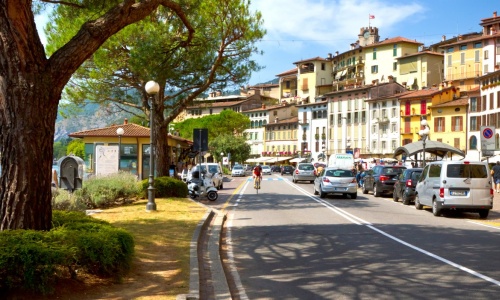
Lakefront Domenico Oprandi
As an appetizer, it is worth enjoying the light, the reflections and the soft lines of the landscape along the lake. The redesign, completed in 2013, donated extra charm to the city, giving it a natural platform to enjoy the view, to relax or sunbathe.
But, if the lake lakefront is not enough for you, try to head to the harbor and watch the traditional boats and fishermen, bearers of ancient traditions and crafts.
Lakefront Domenico Oprandi
As an appetizer, it is worth enjoying the light, the reflections and the soft lines of the landscape along the lake. The redesign, completed in 2013, donated extra charm to the city, giving it a natural platform to enjoy the view, to relax or sunbathe.
But, if the lake lakefront is not enough for you, try to head to the harbor and watch the traditional boats and fishermen, bearers of ancient traditions and crafts.
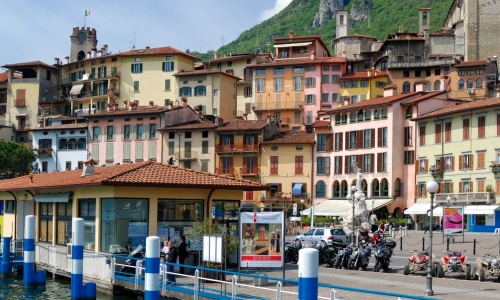
Restaurants and inns in the center
For lunch, it is worth to sit in one of the restaurants that characterize the center of the city. The cuisine reflects the landscape that can be seen from the window, blending the flavors of the lake and the mountains.
Excellent combinations between polenta and fish for example, as for the casonsei: meat ravioli typical of the Bergamo culture. A good rule would be to accompany all of this with courses of the excellent wines from nearby Valcalepio.
Restaurants and inns in the center
For lunch, it is worth to sit in one of the restaurants that characterize the center of the city. The cuisine reflects the landscape that can be seen from the window, blending the flavors of the lake and the mountains.
Excellent combinations between polenta and fish for example, as for the casonsei: meat ravioli typical of the Bergamo culture. A good rule would be to accompany all of this with courses of the excellent wines from nearby Valcalepio.
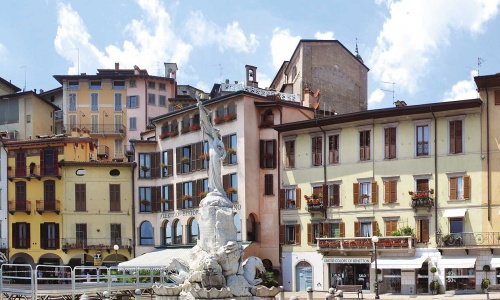
The XIII Martiri Square
To recover from the delights of lunch, you can sit on a bench overlooking the lake or do some shopping in the surrounding marketplace.
Known as the place is full of history, the Martiri Square houses the monument to Liberty, offered to citizens by Enrico Banzolini, patriot of the Lovere Renaissance, who participated in the defense of Venice; and it is dedicated to the partisans shot by the fascists on December 22, 1943.
Today is the hub of city life and is home to the boat landings and bus stops.
The XIII Martiri Square
To recover from the delights of lunch, you can sit on a bench overlooking the lake or do some shopping in the surrounding marketplace.
Known as the place is full of history, the Martiri Square houses the monument to Liberty, offered to citizens by Enrico Banzolini, patriot of the Lovere Renaissance, who participated in the defense of Venice; and it is dedicated to the partisans shot by the fascists on December 22, 1943.
Today is the hub of city life and is home to the boat landings and bus stops.
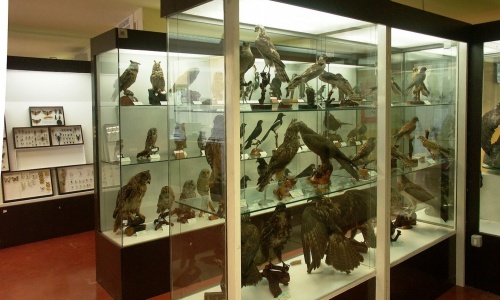
Villa Milesi and the "A. Amighetti" Civic Museum of Natural Sciences
Do you want to enjoy the natural beauty of the surroundings, but without leaving the country?
This is possible in the Museum of Natural Sciences! Founded in 1996, in the home of the family Milesi, it gathers today the finest collections of thousands of birds, insects, shells, plants and minerals from the Bergamo area, but also from the Mediterranean or even further....Oh, and everything is free!
Villa Milesi and the "A. Amighetti" Civic Museum of Natural Sciences
Do you want to enjoy the natural beauty of the surroundings, but without leaving the country?
This is possible in the Museum of Natural Sciences! Founded in 1996, in the home of the family Milesi, it gathers today the finest collections of thousands of birds, insects, shells, plants and minerals from the Bergamo area, but also from the Mediterranean or even further....Oh, and everything is free!
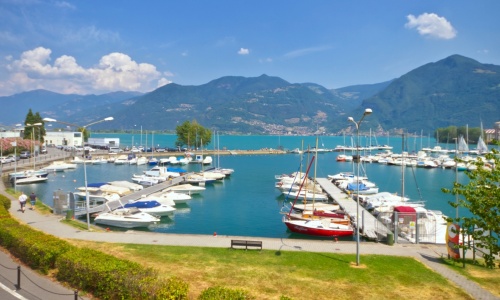
To Montisola, by boat
Lovere is beautiful, but the surrounding area is not far behind. It is therefore worthwhile to board one of the boats that go around the lake. On the one hand, you can choose to wander aimlessly, eyes glued to the views that arise while exploring the environment; on the other, you can point to Montisola, the largest lake island in Europe.
After landing, you can walk the entire perimeter in complete freedom: given that cars are not allowed, it is the ideal location for those who enjoy walking or cycling. Whether it is in Montisola or in the various places mentioned on the tour, do not miss the presence of the characteristic boats, which in the local dialect are called "naèt ".
To Montisola, by boat
Lovere is beautiful, but the surrounding area is not far behind. It is therefore worthwhile to board one of the boats that go around the lake. On the one hand, you can choose to wander aimlessly, eyes glued to the views that arise while exploring the environment; on the other, you can point to Montisola, the largest lake island in Europe.
After landing, you can walk the entire perimeter in complete freedom: given that cars are not allowed, it is the ideal location for those who enjoy walking or cycling. Whether it is in Montisola or in the various places mentioned on the tour, do not miss the presence of the characteristic boats, which in the local dialect are called "naèt ".
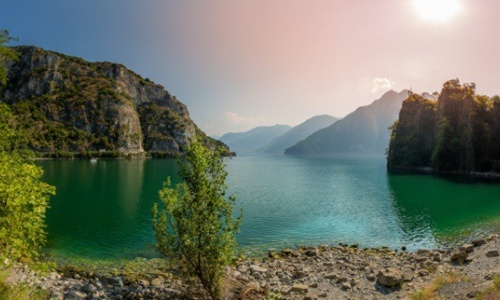
Stay or return?
If you can stop in the evening in Lovere or near it, you should prolong the boat trip until nightfall, when the villages light up and, with the full moon, you can enjoy the spectacular view of the "Bogn", the dizzying rock wall that juts out into the water in Riva di Solto.
If you have to return to Bergamo, you can advance through the hills of Valcalepio, full of small fascinating restaurants. While dining, you can go back, maybe by asking help from the pictures you have taken of the beauty of the places you have visited. But beauty is to be shared, so why not share it with friends?
Stay or return?
If you can stop in the evening in Lovere or near it, you should prolong the boat trip until nightfall, when the villages light up and, with the full moon, you can enjoy the spectacular view of the "Bogn", the dizzying rock wall that juts out into the water in Riva di Solto.
If you have to return to Bergamo, you can advance through the hills of Valcalepio, full of small fascinating restaurants. While dining, you can go back, maybe by asking help from the pictures you have taken of the beauty of the places you have visited. But beauty is to be shared, so why not share it with friends?
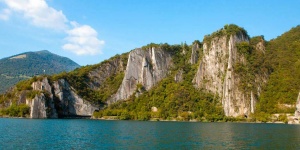
Along the lakeside road, in the stretch between Riva di Solto and Castro, striking vertical slabs of rock overlooking the water create captivating inlets, the so-called "bögn", here is the Bögn in Riva di Solto.
Glimpses of the Bögn are visible by driving along the Western side of Lake Iseo. If you want to take a nice walk, you can easily reach it on foot starting from Riva di Solto towards Castro. Following the old lakeside road, you reach one of the most beautiful places on the lake, a natural amphitheatre rich in vegetation and crystal clear water that bathes a small pebble beach.
Another way to admire this wonderful bay is also from the water by renting a boat or kayak.
An unmissable place!